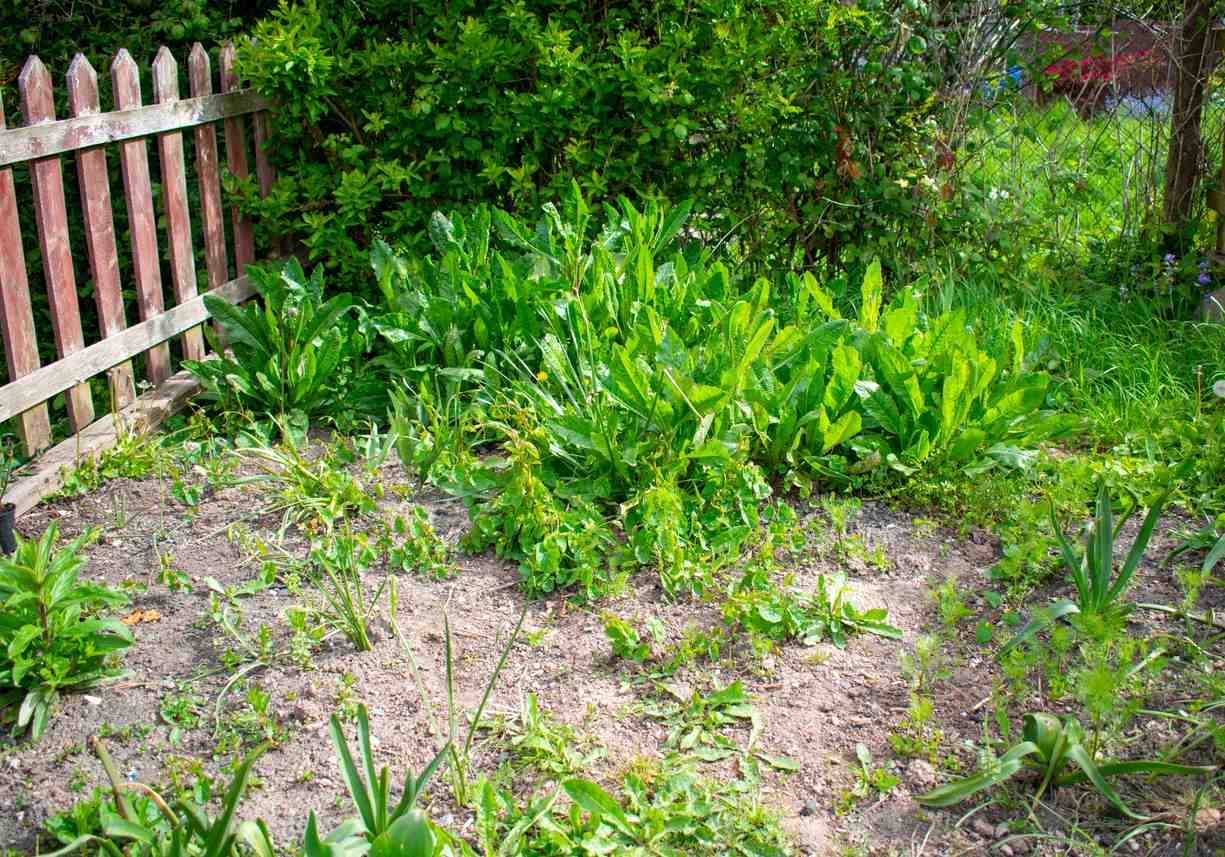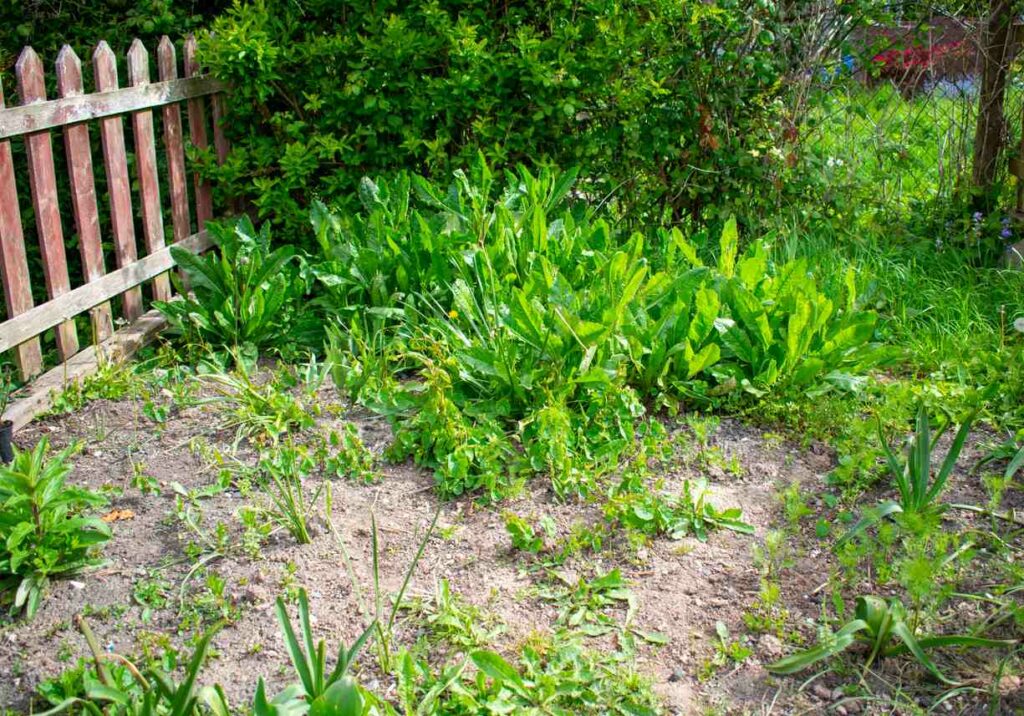Common Lawn Weeds And What To Do About Them
It’s safe to say that weeds are the lawn’s worst enemy. You spend hours mowing the lawn, caring for the turfgrass, and feeding it so that it will look lush and beautiful. But, out of nowhere, a weed appears in the middle of the lawn. It sticks out like a sore thumb. Then more weeds spread out and ruin the meticulous landscape that you have painstakingly designed.
The problem with weeds is that, like the flu virus, there are so many of them. Not all weeds are noxious. Some are less invasive than others. But you still need to be able to identify them, learn how to control them, and prevent them from invading your lawn again.
What is a Lawn Weed?
Before we go any further, we need to take the time to define the common weed. In general, any plant that invades the environment and causes damage to other plants is considered a weed. A weed is a plant that might pose a health risk to humans or animals. For example, giant foxtail, lambs quarters, and crabgrass have been known to cause a lot of health problems to any human or animal that comes in contact with them.
There are also noxious weeds that cause damage to the environment, properties, plants, and animals. Field Bindweed is one example of a noxious weed that required federal regulations to control and get rid of this noxious plant.
Other weeds are just invasive. They don’t cause damage or pose a health risk. They just compete with other plants in your garden or lawn over nutrition. If left to their own devices, these invasive weeds would take over the whole property, suffocate the other plants, and turn your beautiful lawn into an unsightly wilderness.
How to Prevent the Spread of Weed
When it comes to lawn weeds, prevention is always the best cure. It’s a lot easier to control weeds when you only have a handful to deal with. But if you let them spread, they could become a serious problem that takes time and money to eliminate. Here are a few ways you can stop weeds in their tracks and prevent them from taking over your whole lawn or garden.
- Don’t Let them Seed: That means you should be diligent in your efforts to eradicate weeds from your garden and don’t put it off. A single plant can produce thousands of seeds at a time. These seeds will stay in the soil and sprout every year ensuring weeds stay on your lawn for many years. So always remove the weeds before they mature and produce seeds.
- Sterilize your Tools: Whether you’re pruning or tilling the soil, you should always clean the tools every time, after you use them. If you’re borrowing the tools from a neighbor, clean them both before and after you use them.
- Use Clean Materials: This includes mulch, seeds, or soil you introduce to your lawn or garden. Make sure you get your materials from reputable sources to avoid contaminating your lawn seeds with invasive plants.
- Break the Topsoil: Most invasive plants keep their seeds in the two 2 inches of soil. When the soil is dormant, break the topsoil and use a rake to make it flat. Then cover it with a tarp to prevent the seeds from germinating.
- Mulch: One of the advantages of using mulch is it suffocates the seeds of invasive plants and prevents them from sprouting and blocks sunlight.
- Focused Irrigation: When you water your plants, aim at the base of the plant. Don’t sprinkle around the plants. This will keep any seeds in the soil dormant.
Common Lawn Weeds
In your fight to reclaim your garden or lawn, it helps to know what kind of weeds you’re up against. Each different invasive plant needs a special way to combat it, control it, and prevent it from invading your property again. Here are some of the most common lawn weeds and what you can do about them.
Nutsedge (Cyperus)
Nutsedge is a perennial weed that looks almost like regular grass but with a few differences. For one, nutsedge has thicker leaf blades that form a V shape and are stiffer to the touch. This perennial tends to have tiny yellow or purple flower clusters that bloom in the summer. They tend to grow and multiply in veggie patches. Not only are they invasive, but they are also fierce competitors over nutrition and resources as well. Nutsedge reduces your crop dramatically.
To combat this invasive weed, you’ll need to improve the drainage of your soil. Nutsedge often indicates that the soil is waterlogged. As usual, the easiest way to prevent the spread of the weed is to get rid of it when it’s young. Once the plant develops tubers, it’s hard to remove it. You can also use mulching to stifle the growth of nutsedges, especially synthetic materials that resist the sharp edges of the leaves.
Bindweed (Convolvulus arvensis)
A poisonous plant that originates from Eurasia. It’s a perennial weed and once it establishes in a lawn, it is really hard to get rid of it. That’s because it can either propagate through seeds or its robust rootstock. A mature bindweed will have roots that penetrate the soil to depths of 14 feet at a time. Not only that, but the roots also spread out about 10 feet wide. So even if you cut off the vegetation on top of the soil, the roots will sprout again soon after.
It usually sprouts in the spring and by mid-summer white blooms appear and stay open until they pollinate.
To prevent the spread of this invasive plant, you need to get rid of the seedlings before they mature and grow their perennial buds. Unfortunately, mulch doesn’t stop these perennials from growing, so you’ll need to use synthetic materials such as plastic, tarp, or polyester.
Canada Thistle (Cirsium arvense)
One of the most aggressive weeds that infest whole areas be they fields, lawns, gardens, or pastures. Despite its name, this weed originally comes from Europe and Asia. It tends to grow in clusters and covers the ground quickly. It reproduces both through seeds and its sprawling root system. This makes it hard to eliminate since a two-inch fraction of its root can sprout into a new plant. It grows to about 4 feet tall and is very competitive when it comes to food and water in the soil. Grazing animals tend to avoid areas infested with this weed.
Because of these 15-foot roots, it’s usually hard to remove the Canada thistle once it establishes in the soil. Your best option is to put the plant under a lot of stress to force it to use its stored nutrition. You can also use a herbicide but it usually takes up to 2 years of continuous application for that to work.
Pigweed (Amaranthus)
To say that pigweed is an invasive plant that gives farmers a real headache is an understatement. It grows in fertile soil among cotton and soybean crops. Its taproots make it particularly hard to get rid of. It usually spreads through seeds, so your best option is to remove the plant before it has a chance to flower and produce seeds. A fun fact about pigweed is that it’s an edible plant and its tender shoots are packed with vitamins and nutrients.
Mulching is another solution since pigweed needs sunlight to grow and flower. Cover the soil around your plants with a thick layer of mulch to prevent the seeds from sprouting in the spring. Be careful when you till the soil. This might bring hidden seeds up to the surface giving them a good opportunity to sprout. So always mulch after tilling the soil. Experts recommend you lay a thick layer of wet newspapers directly on the soil then cover it with another thick layer of shredded leaves and pine needles.
Purslane (Portulaca oleracea)
In a perfect world, purslane is an edible succulent that gardeners grow for its many culinary and medicinal benefits. But at least one state in the USA considers purslane an invasive plant and prohibits its cultivation. The reason has to do with the obscene amounts of seeds a single plant can produce. You can get about 2 million seeds from a purslane plant each year. That’s enough to cover acres of arable land if given a chance.
When purslane takes over, it’s usually hard to clear your lawn, garden, or pastures from it. That’s because the plant doesn’t even need seeds to propagate. It can reproduce through the stem fragments. This makes prevention the best way to control this plant. But if you find it growing merrily in your garden, you can use mulching to cut the sunlight off the leaves. However, the most effective way is to pull the plant by the roots and get rid of it safely.
Lambsquarters (Chenopodium album)
A native of North America, lambsquarters is an edible annual weed with broad leaves that grows in practically every garden. If you grow veggies or flowering plants, chances are you have come across this weed a lot. What makes it such a nuisance is that its seeds are tiny and get blown by the wind. Once they land, they germinate and start to compete with other vegetation in the garden or lawn. If the seeds don’t get favorable conditions, they just lie dormant in the soil for up to a decade.
Lambsquarters is one of those weeds that look harmless until it covers your veggie patch and flower bed with its green leaves. It absorbs the moisture in the soil fast depriving your flowering plants and veggies of water and nutrition. The best solution is to use a hoe to turn the soil and uproot the pesky weeds. The sooner you do this the fewer chances the plant will have to produce seeds and spread across the garden.
Crabgrass (Digitaria)
A summer annual that grows to about 2 feet tall. It favors dry conditions and usually propagates through seeds or nodes. The good news is, once the temperature drops in the fall, crabgrass can’t handle frost and usually dies. However, it usually produces seeds before the end of the season. By the next spring, the seeds sprout again and start a new life cycle.
This makes your job of removing this weed from the garden fairly easy. As long as you prevent the plant from producing seeds, you won’t have to worry about it coming back to your lawn or garden in the future. Make sure to mow your lawn regularly. This will usually cut the life of crabgrass short and prevent it from flowering.
As for crabgrass in gardens, your best options are to till the soil, use mulching, and manually remove the plant by the roots. Also, make sure to get clean seeds from reliable sources to avoid introducing weeds inadvertently into your garden.

